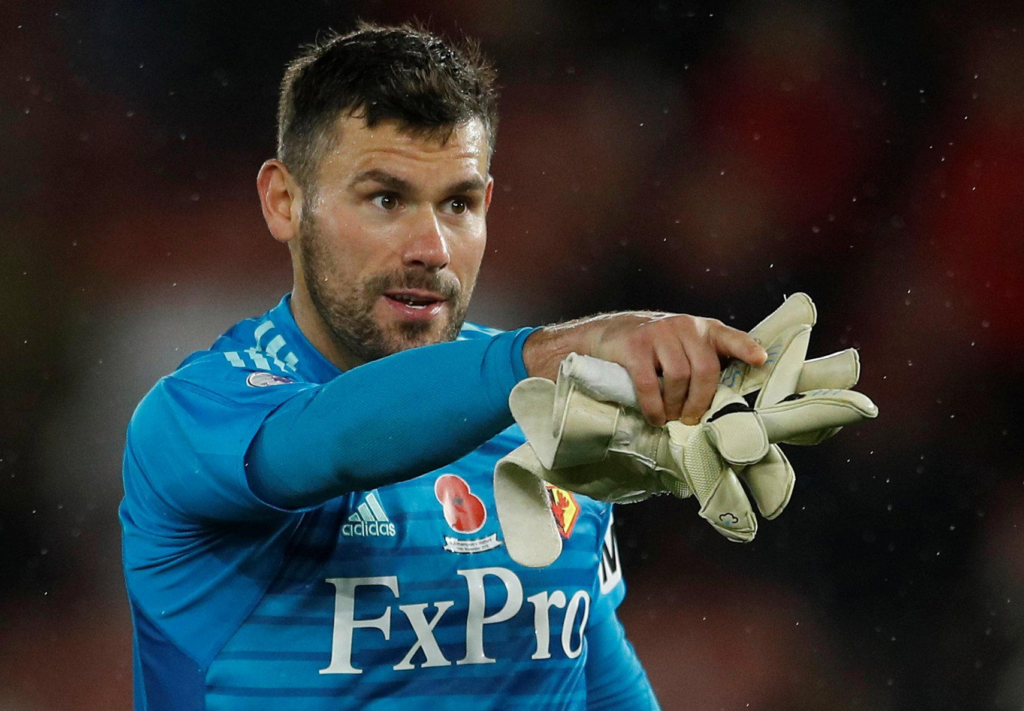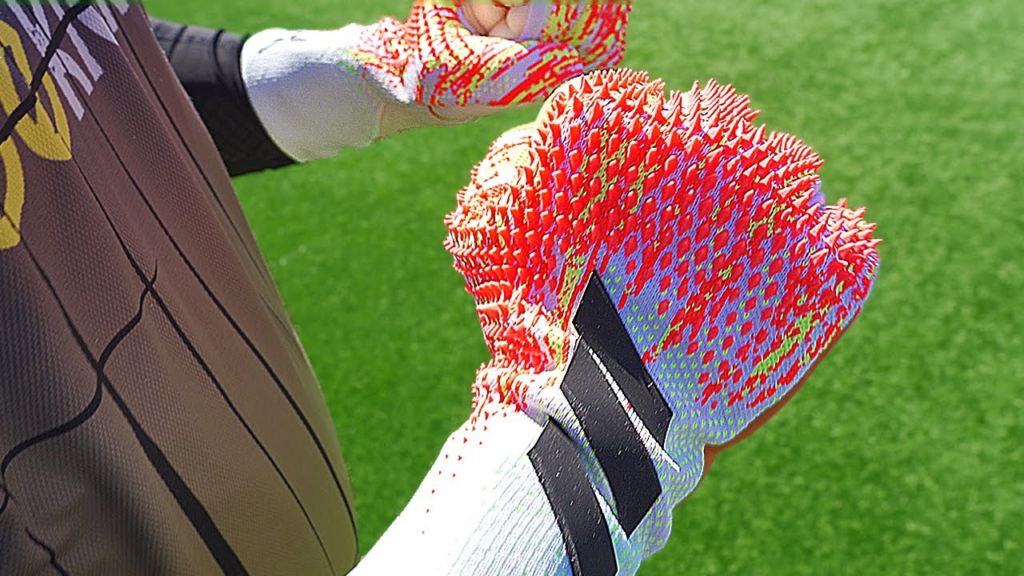In the game of football, every player has a defined role. Strikers are typically the tip of the spear and are charged with netting as many goals as possible. Midfielders are tasked with both creating their team’s and interrupting their opponents’ goal-scoring opportunities. Defenders on the other hand act as a penultimate line of defense and look to neutralize their rivals’ attempts at their goal. It is however goalkeepers who are charged with the ultimate responsibility of keeping the ball from finding the back of their net and coordinating with his team members to help him do just that. But why do goalkeepers wear gloves?
Why do goalkeepers wear gloves? A goalkeepers attire is not complete without gloves, which are worn by goalkeepers to both protect their fingers and hands from injuries and improve their grip on the ball.
We have taken a look at why goalkeepers wear gloves, it wasn’t always that way! We look at who wore gloves first and look at how gloves became widespread across the game.
Contentious History
Former River Plate goalie Amadeo Raúl Carrizo is often credited as being the first goalkeeper to wear gloves. The Argentine, whose career spanned over a quarter of a decade, plied his trade from the mid-1940s to 1970.

A number of historians have however disputed this and claimed that that honor should be bestowed upon former Scotland shot stopper Archie Pinnell, who was spotted donning gloves at a match in the 1890s.
Ex-Stoke and Sunderland goalkeeper Leigh Richmond Roose, whose career lasted from the mid-1890s to the early 1910s was also known to have been in the habit of wearing a pair of white gloves whenever the weather demanded it.
The main factor that tends to strengthen Carrizo’s case as the first to ever do it is that the “sweeper-keeper” pioneer might have indeed been the one to start the trend by wearing gloves specifically meant for goalkeeping.
Other goalies might have experimented with different gloves up to and including woolen gloves and gardening gloves but the little evidence that exists shows that they wore them only on occasion and primarily for other reasons other than goalkeeping such as to keep their hands warm.
The Man That “Invented” Goalkeeper Gloves
Often lost in history, the man who first conceptualized the idea of goalkeeper gloves was an Englishman named William Sykes. In 1885, Sykes made an application for a patent for “a pair of leather gloves or gauntlets used in football playing.”
Sykes, who was clearly a man ahead of his time, subsequently abandoned his intention to manufacture this ground-breaking piece of football equipment despite being awarded the patent and even having a design in hand, which would have utilized India rubber in the gloves to act as protection.

This design however appears to have been carried on by future manufacturers who went on to test out a variety of materials including plastic in an attempt to create the perfect pair of gloves for goalkeepers to use.
The Evolution of Goalkeeper Gloves
From the 1900s through to the 1950s, evidence has shown that most goalkeepers either opted to play using their bare hands, wear woolen gloves or opt to use alternatives forms of protection such as wrapping their hands in bandages.
A small number of goalkeepers also attempted to play in leather gloves but were unsatisfied since they proved to be unreliable especially in wet and/or snowy weather. Woolen gloves also offered little to no protection for keepers under these conditions as they would more than likely soak up water or fail to keep the cold away from a goalie’s fingers leading to a loss of feeling.
Options that offered functionality, flexibility and comfort were virtually non-existed until the 1960s when manufacturers began trying out new ideas such as including minute rubber patches on cotton gloves to help improve a goalkeeper’s grip on the ball.

These developments encouraged goalkeepers such as England great Gordon Banks to try out one of the first pair of these gloves and to have the confidence to wear them in key matches and tournaments such as one that was held in Brazil in 1970.
As the decade progressed, companies like Sondico upped their game and even began manufacturing customized pairs of gloves for goalkeepers in an attempt to popularize their inventions. A wider variety of materials was also incorporated in an attempt to further add flexibility, provide protection and to make the gloves all-weather.

New companies such as Uhlsport and Reusch also burst onto the scene bringing all manners of advancements. Reusch, who were trailblazers in their own right, took a gamble by introducing a pair of gloves that had been made using latex foam, which became an instant hit with keepers at the time.
The Norm, Not the Exception
By the mid to late 1980s, gloves had become a common item for goalkeepers and one would sooner find a keeper with at least a pair or at best several pairs of gloves in their bag than without the once optional item.
There was however a small section of goalies who still preferred using their bare hands due to the design flaws that a majority of the gloves at the time had. There exists evidence that proves that slight changes in weather greatly affected the goalkeeper gloves that were available at the time making them unreliable since that meant that a rise or drop in temperature or an increase or decrease in humidity might have been the difference between conceding a goal or registering a clean sheet.
Companies like Adidas threw their hats in the ring and sought to address these problems in the 1990s. The sports apparel giant ended up inventing one of most popular goalkeeper gloves in the history of the sport– the Fingersave glove.

These gloves received raving reviews for their ability to protect a goalkeeper’s fingers from all sorts of sprains, jams and breaks making it possible for goalies to confidently deflect the ball, which has been known to travel at speeds of up to 130km/hour, away from the goal.
This increased level of protection however came with one drawback – decreased flexibility, especially in earlier models. Adidas have nevertheless looked to remedy this in subsequent models and they, together with other emerging companies, have continued to actively explore different designs and materials to further improve goalkeeper gloves.
Fun Fact: Contrary to popular opinion, there is no law in the FIFA rulebook or the codified Laws of Football that mandate the use of gloves by goalkeepers. Gloves have however become so synonymous with goalkeeping that a goalie would more likely turn heads for not wearing them.
